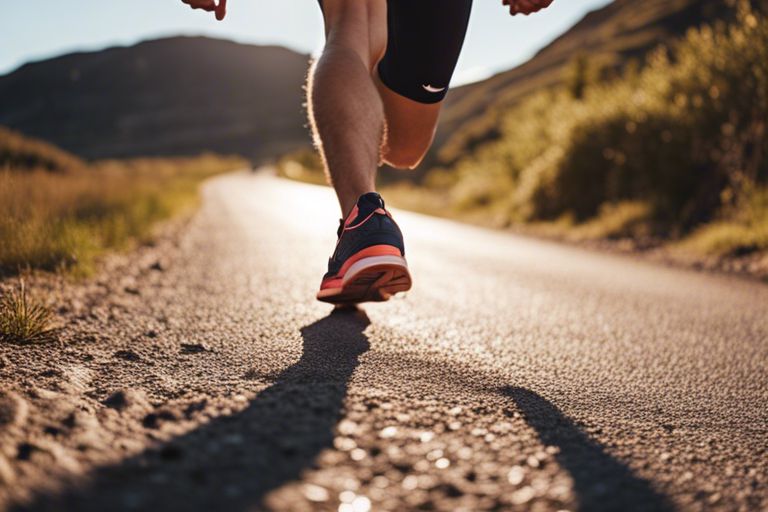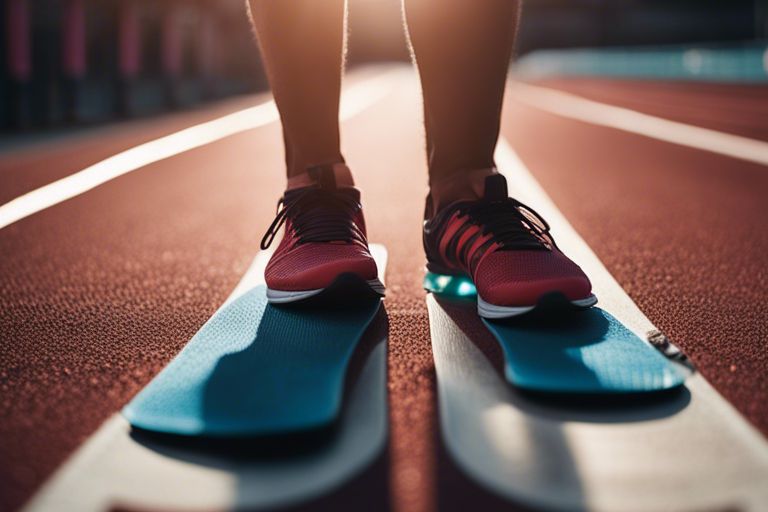Technique plays a crucial role in the efficiency and performance of a runner. One key element to consider is your footstrike – the way your foot makes contact with the ground while jogging. Understanding and perfecting your footstrike can make a significant difference in your overall running experience. In this blog post, we will explore into the importance of footstrike and explore unique techniques to help you achieve the ideal jogging technique for optimal performance and injury prevention.
Key Takeaways:
- Footstrike affects performance: The way your foot lands while jogging can significantly impact your running performance.
- Technique matters: It is important to pay attention to your footstrike and adjust your technique if needed to improve efficiency and prevent injuries.
- Midfoot strike: Landing on the midfoot is often considered ideal for reducing impact on joints and optimizing energy transfer during jogging.
- Forefoot and heel strikes: While some runners naturally land on their forefoot or heel, these techniques may lead to different levels of impact and efficiency, which can affect performance.
- Individual variation: It is essential to find the footstrike that works best for your body and running style to enhance your performance and overall running experience.
Understanding Footstrike Patterns
Now let’s examine into the different footstrike patterns that can significantly impact your jogging performance. By understanding these techniques, you can optimize your running form and minimize the risk of injuries.
Heel Strike Technique
Strike the ground with your heel first in a heel strike technique. This method involves landing on your heel and then rolling through the foot towards the toes. While popular among many runners, heel striking can potentially lead to increased impact forces on the body due to the abrupt landing.
It’s essential to be mindful of your stride length and cadence when using a heel strike technique. Maintaining a shorter stride and quicker turnover can help reduce the impact on your joints and muscles, leading to a more efficient running style.
Midfoot Strike Technique
Technique in a midfoot strike involves landing on the middle of your foot, distributing the impact more evenly across the foot. This technique is often favored by experienced runners as it can help reduce strain on the ankles and knees.
Understanding the midfoot strike technique is crucial for improving your running efficiency. By focusing on landing softly and evenly on the middle of your foot, you can enhance your overall performance and decrease the risk of overuse injuries.
When adopting the midfoot strike technique, it’s important to pay attention to your foot placement and alignment. Proper foot positioning can help you achieve a more natural and energy-efficient running gait.
Forefoot Strike Technique
Strike the ground with the front part of your foot in a forefoot strike technique. This method involves landing on the balls of your feet before rolling through to push off from the toes. Forefoot striking is known for generating less impact on the body compared to heel striking.
Understanding the benefits of the forefoot strike technique can help you make informed decisions about your running form. By utilizing this technique, you can potentially reduce the risk of common running injuries such as shin splints and knee pain.
The Biomechanics of Running
Anatomical Considerations
With every stride you take while running, your body undergoes a complex series of movements that are dictated by your anatomical structure. Your lower limbs, especially your feet, play a crucial role in the running process. The alignment of your joints, the strength of your muscles, and the flexibility of your tendons all contribute to how you run.
Understanding the biomechanics of running involves delving into how your body moves and adapts to the impact forces experienced during each footstrike. Factors such as arch height, ankle stability, and the alignment of your knees all affect how your foot interacts with the ground. Proper biomechanics can help improve performance and reduce the risk of injuries.
The Role of Footwear
To optimize your running performance, the role of footwear cannot be overstated. Running shoes are designed to provide support, cushioning, and stability based on an individual’s unique biomechanics. The type of shoe you choose should align with your foot strike pattern, arch type, and running gait to ensure optimal comfort and efficiency.
Anatomical differences such as pronation, supination, or neutral alignment can influence the type of shoe that is best suited for your running style. Understanding your foot strike pattern and consulting with a professional at a specialty running store can help you select the most appropriate footwear for your needs. Investing in the right pair of running shoes can make a significant difference in your running experience.
Optimizing Your Footstrike
Keep in mind that your footstrike plays a crucial role in your overall running performance. Whether you are a heel striker, midfoot striker, or forefoot striker, understanding and fine-tuning your footstrike can help you become a more efficient and injury-resistant runner. By optimizing your footstrike, you can enhance your running form, increase your running economy, and potentially run faster and longer with less effort.
Assessing Your Current Technique
Your current footstrike technique determines how your foot lands on the ground with each stride. To assess your technique, pay attention to where your foot makes initial contact with the ground. Are you landing on your heel, midfoot, or forefoot? Additionally, consider the alignment of your lower body and the angle of your foot at the moment of impact. By analyzing these factors, you can identify any inefficiencies or potential issues in your footstrike that may be impacting your performance.
One way to assess your footstrike is by recording yourself running on a treadmill or track. Observing video footage of your running form can provide valuable insights into your footstrike pattern and help you pinpoint areas for improvement. Seeking feedback from a running coach or physiotherapist can also offer expert guidance on how to optimize your footstrike for better performance.
Exercises to Improve Footstrike
Footstrike can be improved through specific exercises that target strength, flexibility, and neuromuscular control. Strengthening exercises for the muscles in your feet, ankles, and lower legs can help improve your footstrike mechanics and enhance your overall running performance. Additionally, exercises that focus on mobility and stability in the ankles and hips can help you maintain proper alignment and form throughout your stride.
Exercises to Improve Footstrike may include calf raises, ankle stability drills, foot strengthening exercises, and hip mobility drills. These exercises can help address weaknesses or imbalances that may be contributing to inefficient footstrike patterns. By incorporating these exercises into your regular training routine, you can enhance your footstrike technique and optimize your running performance.
Practical Tips for Better Jogging Performance
For optimal jogging performance, it’s crucial to pay attention to your footstrike and make necessary adjustments to enhance your technique. By following some practical tips and incorporating specific routines into your training, you can improve your overall running experience and prevent potential injuries.
Warm-up Routines for Effective Footstrike
On the importance of warm-up routines, they are essential for preparing your muscles and joints for the impact of running. A dynamic warm-up that includes exercises like leg swings, high knees, and lunges can significantly improve your footstrike and overall running form. Additionally, incorporating some light jogging at a comfortable pace can help increase blood flow to your muscles and prime them for the workout ahead.
With a proper warm-up routine, you can improve your footstrike by ensuring that your muscles are loose and your joints are mobile. This can lead to a more efficient running stride and help you maintain a consistent pace throughout your run. Any time spent on warming up is an investment in your performance and overall well-being.
Incorporating Drills and Stretching
With incorporating drills and stretching into your routine, you can further enhance your footstrike and running technique. Running drills such as high knees, butt kicks, and bounding can help improve your running form and strengthen key muscles used in the footstrike phase. Additionally, including stretching exercises targeting your calves, hamstrings, and hip flexors can increase flexibility and range of motion, allowing for a more natural and efficient footstrike.
A comprehensive approach to incorporating drills and stretching can help you fine-tune your footstrike technique and reduce the risk of common running injuries. By dedicating time to these exercises regularly, you can improve your running performance and enjoy a smoother and more comfortable running experience.
Final Words
Upon reflecting on the various footstrikes and techniques discussed in this article, it is evident that your footstrike can greatly impact your running performance. By understanding the different types of footstrikes and implementing the unique techniques for an ideal jogging technique, you can improve your efficiency, reduce your risk of injury, and enhance your overall running experience. Note, each individual may have a different footstrike that works best for them, so it is important to experiment and find what feels most comfortable and natural for you. With practice and proper form, you can optimize your footstrike and take your running performance to the next level.
FAQ
Q: Why is footstrike important in jogging technique?
A: Footstrike is important in jogging technique because it determines how your foot lands on the ground, which can impact your performance and reduce the risk of injuries.
Q: What are the common types of footstrike during jogging?
A: The common types of footstrike during jogging are heel strike, midfoot strike, and forefoot strike. Each type has its own advantages and disadvantages.
Q: How can footstrike affect running performance?
A: Footstrike can affect running performance by influencing your speed, efficiency, and energy expenditure. A proper footstrike can help you run faster and longer with less effort.
Q: What are the techniques for improving footstrike during jogging?
A: Techniques for improving footstrike during jogging include focusing on landing softly, maintaining a high cadence, and engaging the core muscles for stability and balance.
Q: How can I determine the ideal footstrike for my jogging technique?
A: The ideal footstrike for your jogging technique depends on your individual biomechanics and running goals. Experiment with different footstrikes to see which one feels most comfortable and efficient for you.






